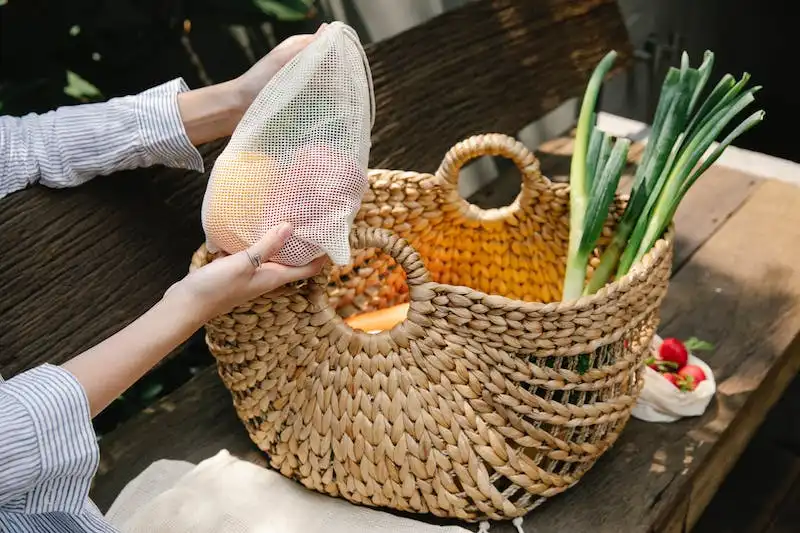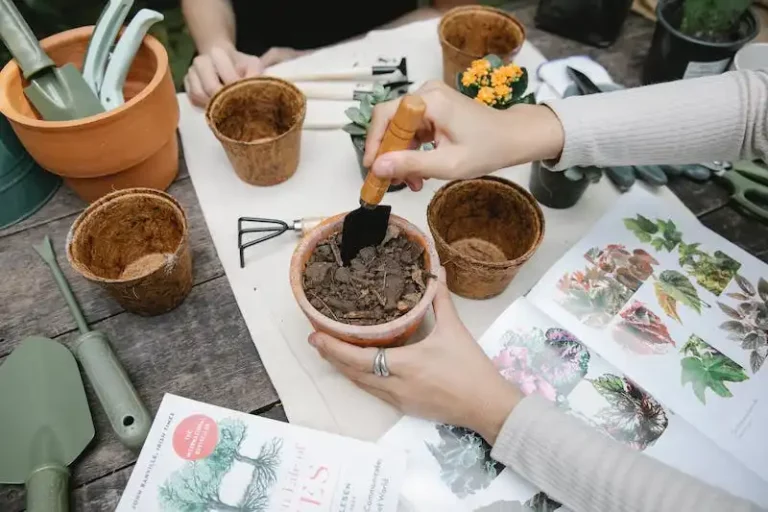If you are looking for a beautiful addition to your garden that is relatively low-maintenance and long-lasting, the Japanese anemone (Anemone hupehensis) is an excellent choice. This herbaceous perennial belongs to the buttercup family and is known for its charming flowers and graceful growth habit.
The Japanese anemone has many uses in the garden, from adding color and texture to borders and beds, to providing a focal point in a mixed planting. It is also a great choice for cuttings and can be propagated easily by dividing the rootball in early spring or autumn.
When choosing a location for your Japanese anemone, look for a spot with well-drained soil and partial shade. They can also tolerate full sun, but in hot regions, some afternoon shade may be beneficial to prevent wilting. Make sure to provide good drainage, as these plants do not like to sit in water.
Japanese anemones come in a variety of colors, including white, pink, and blush. Some popular cultivars include ‘Honorine Jobert’ with its pure white flowers and ‘Queen Charlotte’ with creamy petals. There are also double-flowered and white-flowered varieties available.
In terms of care, Japanese anemones need regular watering, especially during dry spells. It is important to keep the soil consistently moist but not waterlogged. Mulching around the plants can help retain moisture and suppress weeds. Fertilize organically with well-rotted compost or a balanced fertilizer in spring.
Pruning is not usually required for Japanese anemones, but if they become leggy or crowded, you can cut them back in early spring before new growth emerges. Deadheading spent flowers will encourage more blooms. Staking may also be necessary for taller varieties to prevent them from flopping over.
Japanese anemones are generally pest and disease resistant. However, they can be susceptible to slugs, snails, and nematodes. Use organic pest control methods to keep these pests at bay. Japanese anemones are also attractive to birds, so they can be a welcome addition to a wildlife-friendly garden.
In conclusion, Japanese anemones are beautiful, low-maintenance plants that can add a touch of elegance to any garden. With the right care and conditions, they will reward you with their long-lasting blooms and graceful presence. Whether you choose the classic white ‘Honorine Jobert’ or one of the many other cultivars available, the Japanese anemone is sure to be a standout in your garden.
How to Grow Fall-Blooming Japanese Anemone Flowers
Japanese Anemones are beautiful flowers that bloom in the fall, adding color and charm to your garden. They are easy to grow and care for, making them a popular choice for many gardeners. Below, we will discuss the steps for successfully growing these lovely plants.
Planting Japanese Anemone
Japanese Anemones prefer a location that receives partial shade, especially in the afternoon. They can tolerate full sun but may require additional watering in hot climates. When planting, dig a hole that is twice as wide and the same depth as the rootball of the plant. Place the plant in the hole and backfill with soil, making sure to lightly firm it down. Water the plant thoroughly after planting.
Soil and Care
Japanese Anemones prefer fertile, well-draining soil. Incorporating well-rotted manure or compost into the soil prior to planting can help improve the soil quality. These plants like moist soil but can tolerate short periods of dryness. It’s important to water them regularly, especially during dry spells. Apply a layer of mulch around the plant to help retain moisture and suppress weed growth.
Managing Japanese Anemones
Japanese Anemones are fast growers and can spread horizontally through rhizomes. If you want to control their spread, you can dig up and divide the plants every few years. This helps keep them in check and provides an opportunity to propagate new plants. Additionally, pruning spent flowers can encourage more blooms and prevent seedlings from spreading.
Propagation of Japanese Anemones
Japanese Anemones can be propagated through division, root cuttings, or by collecting and sowing seeds. Dividing the plants in spring or fall is the most common method. When dividing the plants, it’s important to ensure each division has a portion of the root system. Root cuttings can be taken in late winter or early spring. Collecting and sowing seeds can be done after the flowers have faded in early summer.
Hybrid Varieties
There are many hybrid varieties of Japanese Anemones available, offering a wider range of flower colors. These hybrids can produce flowers in shades of pink, white, and even yellow. Some hybrids also have double flowers, which are particularly striking. They can be used in mixed borders, cottage gardens, or as part of herbaceous plantings.
In conclusion, growing fall-blooming Japanese Anemone flowers is a rewarding experience. With the right care and management, these plants can thrive and enhance the beauty of your garden for many years to come.
What You’ll Learn
In this article, you’ll learn various tips and techniques for caring and managing Japanese Anemone plants. These beautiful flowers are perfect for both experienced gardeners and beginners. Whether you are looking to add a pop of color to your garden or want a low maintenance plant, Japanese Anemone can be the perfect choice.
First, we’ll provide you with a profile of these stunning plants. You’ll learn about their winter hardiness, their preference for partial shade, and their ability to tolerate different soil conditions. We’ll also discuss the different cultivars available and their unique characteristics, including the creamy white flowers of the ‘Honorine Jobert’ cultivar and the deep pink blooms of the ‘Lorna Kring’ cultivar.
Next, we’ll guide you through the planting and growing process. We’ll give you advice on selecting the best location in your garden, ensuring proper drainage for the plants, and preparing the soil for optimum growth. You’ll learn about watering tips and how to maintain the right moisture level for your Japanese Anemone plants. We’ll also discuss the importance of dividing the plants regularly to control their size and promote healthy growth.
Finally, we’ll provide you with tips on winter maintenance and how to ensure your Japanese Anemone plants survive the cold weather. You’ll learn how to protect the plants from frost and snow, including strategies for mulching and covering them during the winter months. We’ll also discuss the best time to divide and transplant your plants, as well as common propagation techniques if you wish to grow more Japanese Anemones.
By the end of this article, you’ll have a comprehensive understanding of Japanese Anemone care and be equipped with the knowledge and techniques needed to keep these stunning flowers thriving in your garden.
What Are Japanese Anemones
Japanese anemones, also known as Anemone x hybrida, are a type of perennial flower that belongs to the buttercup family. These sharp and striking plants are commonly grown for their beautiful fall-blooming flowers. The flowers, which come in various types and colors including whites, pinks, and purples, have an elegant and graceful appearance, often with a slightly tinged blush or double heads.
Japanese anemones are quick to grow and form dense clumps, making them excellent perennials for borders or as ground cover. They have long-lasting blooms that will bring splendor to your garden from late summer through September. These plants also provide a valuable source of nectar for bees and birds, attracting pollinators to your garden.
When planting Japanese anemones, it is important to choose a spot with well-drained, fertile soil that receives light shade or partial sunlight. These plants prefer slightly acidic to neutral soil pH. It is also a good idea to add organic matter, such as compost, to the soil before planting to improve its fertility and drainage.
Japanese anemones are commonly available as potted plants or as divisions. If you want to grow them from seeds, sow them in early spring or in the fall, as they need a cold period to germinate. You can also propagate Japanese anemones by taking cuttings in early summer.
Caring for Japanese anemones is relatively easy. They are low-maintenance plants that require minimal attention. Water them regularly, especially during prolonged dry periods, and mulch around the base of the plants to conserve moisture and control weeds. Japanese anemones are generally resistant to diseases and pests, but controlling snails and slugs might be necessary.
Overwintering Japanese anemones is possible by providing a layer of mulch around the bases of the plants to protect their roots from freezing temperatures. When the plants mature, they may become bare at the base, so it is recommended to plant them among other taller plants to provide support and camouflage.
In conclusion, Japanese anemones are a beautiful and versatile addition to any garden. With their long-lasting blooms and striking appearance, these perennials will bring color and joy to your outdoor space. Plant, care for, and enjoy the beauty of Japanese anemones in your garden.
A Note of Caution
While Japanese anemones are relatively easy to grow and care for, there are a few things to keep in mind to ensure success in your garden. First, it’s important to note that Japanese anemones are hybrid plants, meaning they are created through the cross-breeding of different species. As a result, they may not always come true from seed. If you want to ensure you end up with the exact plant you desire, it is best to buy a mature plant from a reputable source.
In terms of propagation, Japanese anemones can be easily spread by taking root cuttings in late winter or early spring. However, it is essential to learn the proper techniques and follow the right steps to successfully propagate these plants. It’s also important to note that Japanese anemones can become invasive if left unchecked. To prevent spreading, sprinkle a layer of sharp sand or grit around the base of the plants in late winter or early spring.
When choosing a location for your Japanese anemones, keep in mind that they prefer to be in full to partially filtered sunlight. They can tolerate a variety of soil types but do best in well-drained soil with ample organic matter. Regular watering is essential, especially during the summer months, as these plants require consistent moisture to thrive.
In terms of care, Japanese anemones benefit from regular pruning. Remove spent flower heads before they have a chance to set seed to prevent them from spreading. Pruning can also help control the size and shape of the plant and encourage more blooming. However, be careful when pruning, as the stems of Japanese anemones are somewhat delicate.
Another potential concern when growing Japanese anemones is the presence of nematodes. These microscopic organisms can cause damage to plant roots and impair growth. If you notice signs of nematode infestation, such as stunted or discolored growth, it is best to seek advice on controlling these pests.
In terms of temperature, Japanese anemones are generally hardy and can tolerate cold temperatures. However, extreme winter conditions can cause damage to the plants. To protect them during harsh winters, consider applying a layer of mulch or garden manure around the base of the plants.
Finally, it’s worth noting that Japanese anemones can attract birds to your garden. The flowers provide a food source, and the plants can also provide shelter. If you enjoy birdwatching, Japanese anemones can add an extra level of interest to your garden.
In conclusion, Japanese anemones are beautiful and quick-growing perennials that can thrive in many gardens. By following the right care and propagation techniques, you can enjoy their stunning flowers year after year. Just remember to choose the right plants, provide them with the proper growing conditions, and take necessary precautions to prevent spreading and control pests. With a little bit of effort, your Japanese anemones will be a standout feature in your garden.




